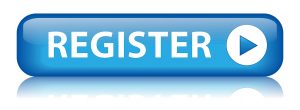The following article was contributed by Catherine Welch, Ph.D., Professor, Educational Measurement and Statistics; College of Education, University of Iowa and Stephen F. Dunbar, Ph.D., Professor, Educational Measurement and Statistics, College of Education, University of Iowa.
The assessment of student achievement continues to be a fundamental and significant source of information in our society. While recognizing that achievement data are powerful, we must always guide towards appropriate use and interpretation. Test designers, developers and researchers must balance the complexity of validating assessments while also recognizing that it is the information from assessments that determines the contribution and value to our students, educators and policymakers. It is the translation of test results into useable and accessible information that should drive all test design and development and ultimately impact the appropriate and supported uses of a test. Users of assessment information should be able to use it to the greatest advantage to inform instruction for students.
Assessments that inform teaching and learning start with the clear articulation of goals for student learning and frequently include a variety of approaches and strategies for assessing student achievement, whether that achievement reflects growth, status or a more detailed diagnosis of strengths and weaknesses within a particular area. The majority of assessments that inform teaching and learning are designed, developed and used by the classroom teacher. They are used every day to deliver instruction, determine emphasis on content and identify additional resources needed. However, in addition to the day-to-day classroom-based assessments, teaching and learning may also be informed through more formal assessments such as district-wide assessments that are also designed to support learning improvement while providing additional information not typically available from classroom-based assessments. For example, this additional information may include a reference to how students performed on specific content and skills, how that performance compared to other contents and skills, and how that performance compared to students in the district or state. Or, this information may include statements about how the student grew from one grade to another using empirical evidence about how other students grew from one grade to another.
The role of measurement is to provide information that will permit decisions to be as informative and fair as possible. Every aspect of test design and development contributes to information usefulness. From decisions made early in the design process with respect to purposes to be served by an assessment, the value and appropriateness of the information is a concern. Usefulness is an ongoing, iterative process that should be addressed at all stages of development and re-evaluated in a systematic way by the designers as well as the users of the information.
To maximize the usefulness of assessment information educators can turn to student analytics to reveal new insights into the performance of students. The richness of student data generated by comprehensive assessments enables educators to go beyond the typical analysis. Student analytics focus on understanding how students respond and why, enabling accurate predictions about how they are likely to perform in the future. It enables educators to make the right decisions around instruction for students at the right time. In addition, tools for student analytics are becoming widely available through student information and assessment systems. These systems not only house the data, but they make it readily accessible for educators. At the end of the assessment experience if we have failed to utilize the information fully, then any advantage from non-classroom-based assessment has been forfeited.
It’s not too late to attend the 2018 NCEA New Directions Assessment Conference!
The 2018 NCEA New Directions Assessment Conference (Assessment 2018) will provide top level education on how Catholic schools can implement a comprehensive assessment program to monitor student progress and inform decision-making regarding instructional programs.
Have you had a chance to check out these great video?

